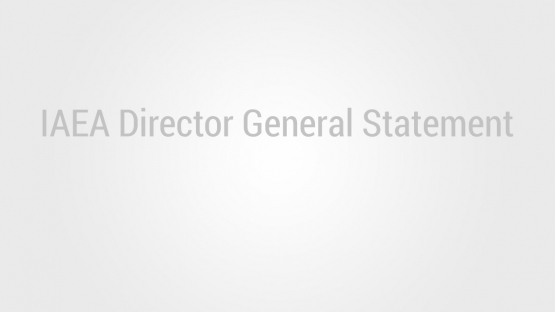From the earliest days of discovery and experimentation with nuclear science, nuclear and radioactive materials have held extraordinary potential — the potential for being of great benefit to humankind, as well as for causing significant harm. For the past forty four years, the IAEA has played an important role in ensuring that nuclear technologies and materials are used only for peaceful purposes — in producing nuclear energy, and in helping to fight disease, enhance agricultural production, manage water resources and monitor the environment. At the same time, the Agency’s safeguards programme has been providing assurances that international undertakings to use nuclear facilities and materials for peaceful purposes are being honoured.
An area of recent focus for the Agency has been the prevention of illicit trafficking in nuclear and radioactive material. In the wake of the Cold War, the smuggling of these materials has emerged as a real and dangerous threat. Since 1993, over 370 cases of illicit trafficking have been confirmed. While most of these incidents do not involve material that can be used for making nuclear weapons, the high number of events shows that we have reason to be concerned. In response, the international community, working through the Agency and through bilateral assistance, has stepped up efforts to prevent unauthorized uses of or trafficking in nuclear material and other radioactive sources.
For any State, the first step in ensuring the security of their materials is an effective national system of control. Such a system must contain multiple elements, including physical protection measures, material accountability arrangements, reliable detection capabilities, and plans for rapid and effective response when material is found to be lost, stolen or otherwise not under proper control. The system must also cover illegal waste dumping and other activities that would result in the release of radioactive material into the environment. All these measures should be based on well founded legal and regulatory structures. In many cases, the responsibility for these various elements lies with different bodies, and co-operation between them is vital to the success of the national system.
For many States, some of the elements of a viable national system for the security of nuclear and radioactive material already exist. They may be in place as part of the State’s safeguards undertakings, or as a result of the State’s being party to the Convention on the Physical Protection of Nuclear Material. Where already in place, these elements can work together to serve multiple purposes, thereby leveraging the resources devoted by the State to security measures. In other words, where the State already has a safeguards system in place, the efforts to combat illicit trafficking should be integrated into this overall system.
The International Atomic Energy Agency can be of service to a State that is seeking to upgrade its security measures for nuclear and radioactive material — through the transfer of technology, exchange of information, assistance and training in the implementation of internationally accepted standards, and help with regional co-operation. An important component of our efforts has been to work in close association with responsible national and international authorities, including customs and law enforcement organizations, to share best practices and conduct assistance visits. In response to requests, we also have organized International Physical Protection Advisory Services (IPPAS), using experts from our Member States to conduct peer evaluations of national systems for physical protection. Since 1996, we have conducted these missions in 11 States in various regions of the world.
An increasing number of States are also requesting our assistance in training their customs officers in radiation monitoring at border stations — as well as providing support to national authorities and border officials in preventing, detecting, and responding to illegal uses of nuclear and radioactive materials. We have initiated a co-ordinated research project that consolidates ongoing research activities to improve the technology used to detect nuclear material at border stations. And we will continue to work with Interpol, Europol, the World Customs Organization and other international organizations in conferences such as this one, to bring together experts in the field and determine how progress can best be achieved.
In November 1999, I convened an informal, open ended meeting of experts to discuss whether the Convention on Physical Protection of Nuclear Material should be revised. I expect to receive a report from the Expert Group within the next few months.
Looking towards the future, it is clear that broad international co-operation will be needed to upgrade security measures, to improve capabilities for intercepting and responding to illicit trafficking, and to enhance the protection of facilities against terrorism and sabotage. The most difficult challenge will be the effective consolidation of all these measures into integrated, efficient national systems, ensuring that the security of nuclear and other radioactive material is woven into the infrastructure of nuclear safety and security. It is my sincere hope that this conference will provide a forum for productive discussion and comprehensive consideration of these issues, and I wish you every success in these endeavours.


